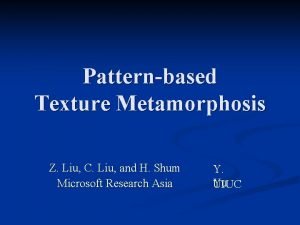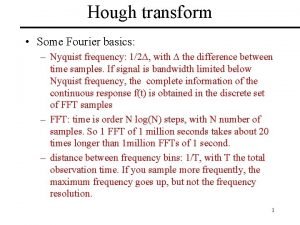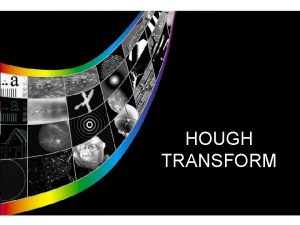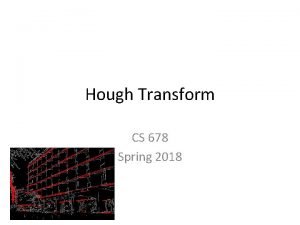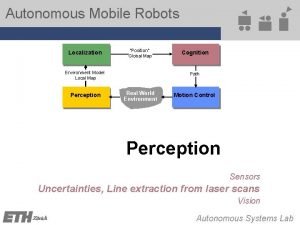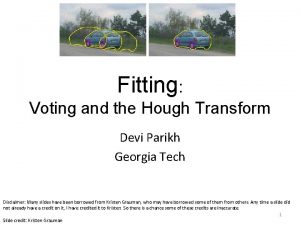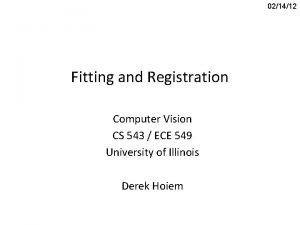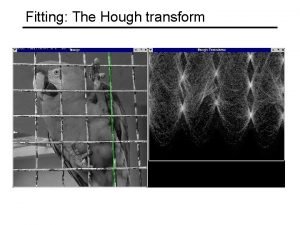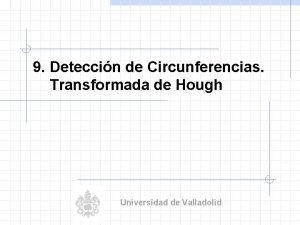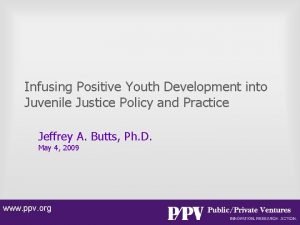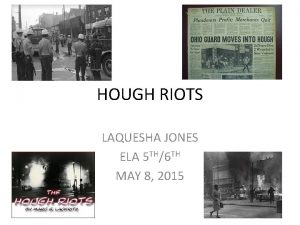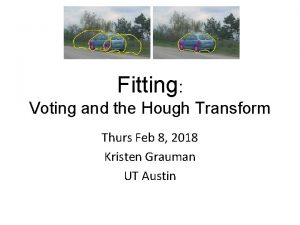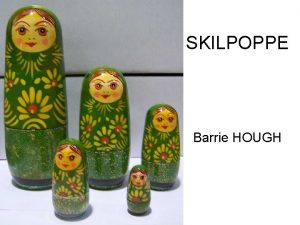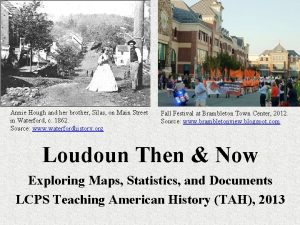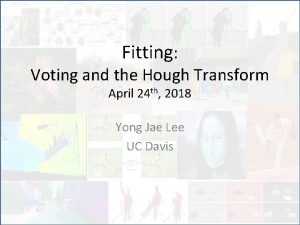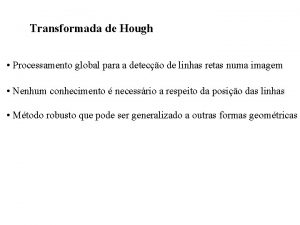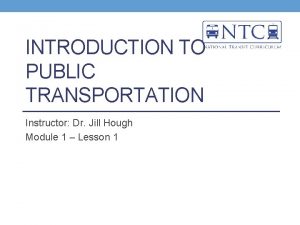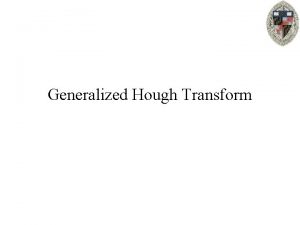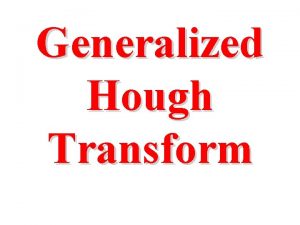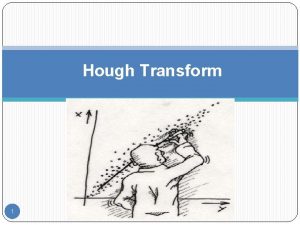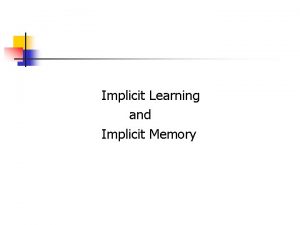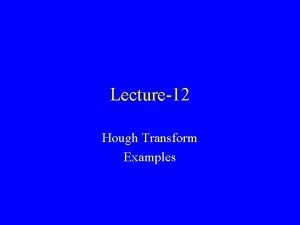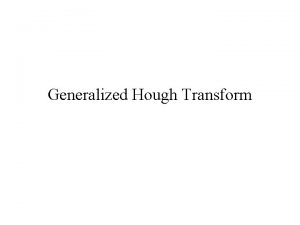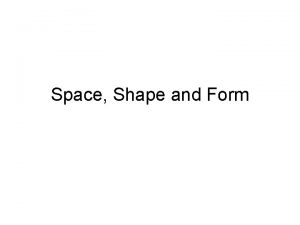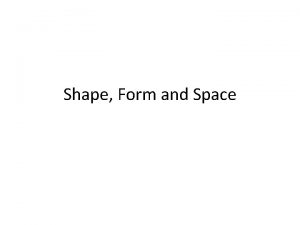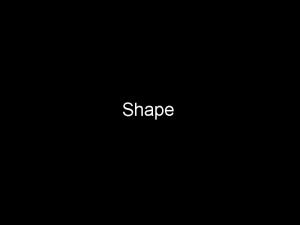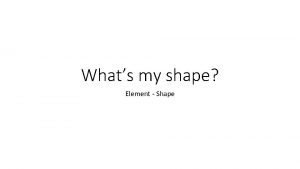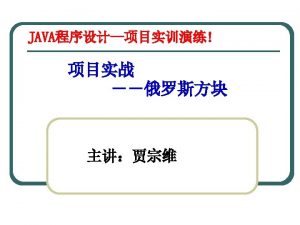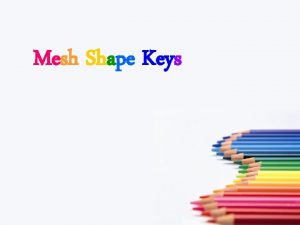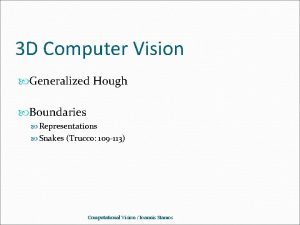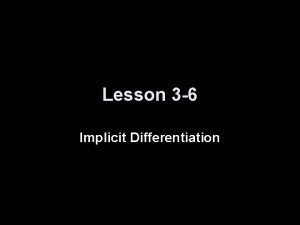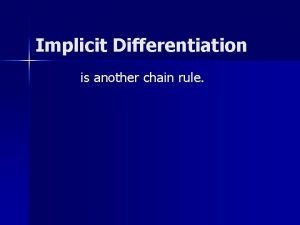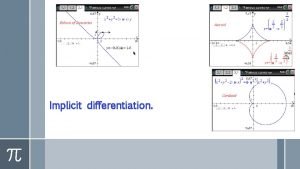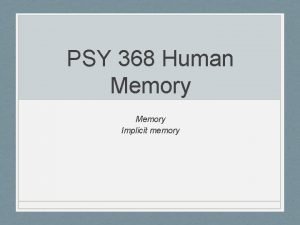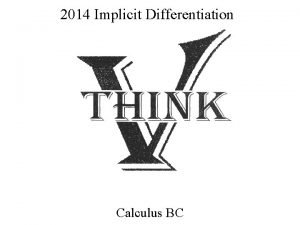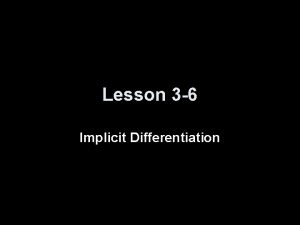Today Hough Transform Generalized Hough Transform Implicit Shape







![Generalized Hough Transform [Ballard 81] • Generalization for an arbitrary contour or shape – Generalized Hough Transform [Ballard 81] • Generalization for an arbitrary contour or shape –](https://slidetodoc.com/presentation_image_h2/ea4963f69c385a95b43708d330b54ecb/image-8.jpg)


![3 D Object Recognition • Gen. HT for Recognition [Lowe 99] – Typically only 3 D Object Recognition • Gen. HT for Recognition [Lowe 99] – Typically only](https://slidetodoc.com/presentation_image_h2/ea4963f69c385a95b43708d330b54ecb/image-11.jpg)

















- Slides: 28


Today • Hough Transform • Generalized Hough Transform • Implicit Shape Model • Video Google

Hough Transform & Generalized Hough Transform

Hough Transform • Origin: Detection of straight lines in clutter – Basic idea: each candidate point votes for all lines that it is consistent with. – Votes are accumulated in quantized array – Local maxima correspond to candidate lines • Representation of a line – Usual form y = a x + b has a singularity around 90º. – Better parameterization: x cos( ) + y sin( ) = y ρ x K. Grauman, B. Leibe θ

Examples – Hough transform for a square (left) and a circle (right) K. Grauman, B. Leibe

Hough Transform: Noisy Line ρ Tokens Votes • Problem: Finding the true maximum K. Grauman, B. Leibe θ

Hough Transform: Noisy Input ρ Tokens Votes • Problem: Lots of spurious maxima K. Grauman, B. Leibe θ
![Generalized Hough Transform Ballard 81 Generalization for an arbitrary contour or shape Generalized Hough Transform [Ballard 81] • Generalization for an arbitrary contour or shape –](https://slidetodoc.com/presentation_image_h2/ea4963f69c385a95b43708d330b54ecb/image-8.jpg)
Generalized Hough Transform [Ballard 81] • Generalization for an arbitrary contour or shape – Choose reference point for the contour (e. g. center) – For each point on the contour remember where it is located w. r. t. to the reference point – Remember radius r and angle relative to the contour tangent – Recognition: whenever you find a contour point, calculate the tangent angle and ‘vote’ for all possible reference points – Instead of reference point, can also vote for transformation The same idea can be used with local features! K. Grauman, B. Leibe Slide credit: Bernt Schiele

Implicit Shape Model

Gen. Hough Transform with Local Features • For every feature, store possible “occurrences” • For new image, let the matched features vote for possible object positions K. Grauman, B. Leibe
![3 D Object Recognition Gen HT for Recognition Lowe 99 Typically only 3 D Object Recognition • Gen. HT for Recognition [Lowe 99] – Typically only](https://slidetodoc.com/presentation_image_h2/ea4963f69c385a95b43708d330b54ecb/image-11.jpg)
3 D Object Recognition • Gen. HT for Recognition [Lowe 99] – Typically only 3 feature matches needed for recognition – Extra matches provide robustness – Affine model can be used for planar objects K. Grauman, B. Leibe Slide credit: David Lowe

View Interpolation • Training – Training views from similar viewpoints are clustered based on feature matches. – Matching features between adjacent views are linked. • Recognition – Feature matches may be spread over several training viewpoints. Use the known links to “transfer votes” to other viewpoints. [Lowe 01] K. Grauman, B. Leibe

Recognition Using View Interpolation K. Grauman, B. Leibe

Location Recognition Training K. Grauman, B. Leibe

Applications • Sony Aibo (Evolution Robotics) • SIFT usage – Recognize docking station – Communicate with visual cards • Other uses – Place recognition – Loop closure in SLAM K. Grauman, B. Leibe 16 Slide credit: David Lowe

Video Google

Indexing local features • Each patch / region has a descriptor, which is a point in some high-dimensional feature space (e. g. , SIFT) K. Grauman, B. Leibe

Indexing local features • When we see close points in feature space, we have similar descriptors, which indicates similar local content. Figure credit: A. Zisserman K. Grauman, B. Leibe

Indexing local features • We saw in the previous section how to use voting and pose clustering to identify objects using local features Figure credit: David Lowe K. Grauman, B. Leibe

Indexing local features • With potentially thousands of features per image, and hundreds to millions of images to search, how to efficiently find those that are relevant to a new image? – Low-dimensional descriptors : can use standard efficient data structures for nearest neighbor search – High-dimensional descriptors: approximate nearest neighbor search methods more practical – Inverted file indexing schemes K. Grauman, B. Leibe

Indexing local features: inverted file index • For text documents, an efficient way to find all pages on which a word occurs is to use an index… • We want to find all images in which a feature occurs. • To use this idea, we’ll need to map our features to “visual words”. K. Grauman, B. Leibe

Visual words • More recently used for describing scenes and objects for the sake of indexing or classification. Sivic & Zisserman 2003; Csurka, Bray, Dance, & Fan 2004; many others. K. Grauman, B. Leibe

Inverted file index for images comprised of visual words Word number Image credit: A. Zisserman K. Grauman, B. Leibe List of image numbers

Bags of visual words • Summarize entire image based on its distribution (histogram) of word occurrences. • Analogous to bag of words representation commonly used for documents. Image credit: Fei-Fei Li K. Grauman, B. Leibe

Video Google System Query region Retrieved frames 1. Collect all words within query region 2. Inverted file index to find relevant frames 3. Compare word counts 4. Spatial verification Sivic & Zisserman, ICCV 2003 • Demo online at : http: //www. robots. ox. ac. uk/~vgg/ research/vgoogle/index. html K. Grauman, B. Leibe 26

Visual vocabulary formation Issues: • Sampling strategy • Clustering / quantization algorithm • What corpus provides features (universal vocabulary? ) • Vocabulary size, number of words K. Grauman, B. Leibe

Sampling strategies Sparse, at interest points Dense, uniformly Randomly • To find specific, textured objects, sparse sampling from interest points often more reliable. • Multiple complementary interest operators offer more image coverage. • For object categorization, dense sampling offers better coverage. Multiple interest operators Image credits: F-F. Li, E. Nowak, J. Sivic [See Nowak, Jurie & Triggs, ECCV 2006] K. Grauman, B. Leibe

Clustering / quantization methods • k-means (typical choice), agglomerative clustering, mean-shift, … K. Grauman, B. Leibe 29
 Generalized hough transform
Generalized hough transform Hough transform
Hough transform Hough transform
Hough transform Hough transform
Hough transform Hough transform
Hough transform Hough transform
Hough transform Hough transform
Hough transform Hough
Hough For today's meeting
For today's meeting Today's lesson or today lesson
Today's lesson or today lesson Today is class
Today is class Example of repitition
Example of repitition Proposal kickoff meeting agenda
Proposal kickoff meeting agenda Fingerprint ridge characteristics worksheet
Fingerprint ridge characteristics worksheet Transformada de hough
Transformada de hough Bruce robert hough
Bruce robert hough Cleveland hough riots
Cleveland hough riots Hough raum
Hough raum Hough voting
Hough voting Skilpoppe barrie hough
Skilpoppe barrie hough Annie hough
Annie hough Hough voting
Hough voting Transformada de hough
Transformada de hough Jill hough
Jill hough Emily hough nhs
Emily hough nhs Template matching
Template matching Drag divergence mach number
Drag divergence mach number Shape matching and object recognition using shape contexts
Shape matching and object recognition using shape contexts Audit approach
Audit approach
